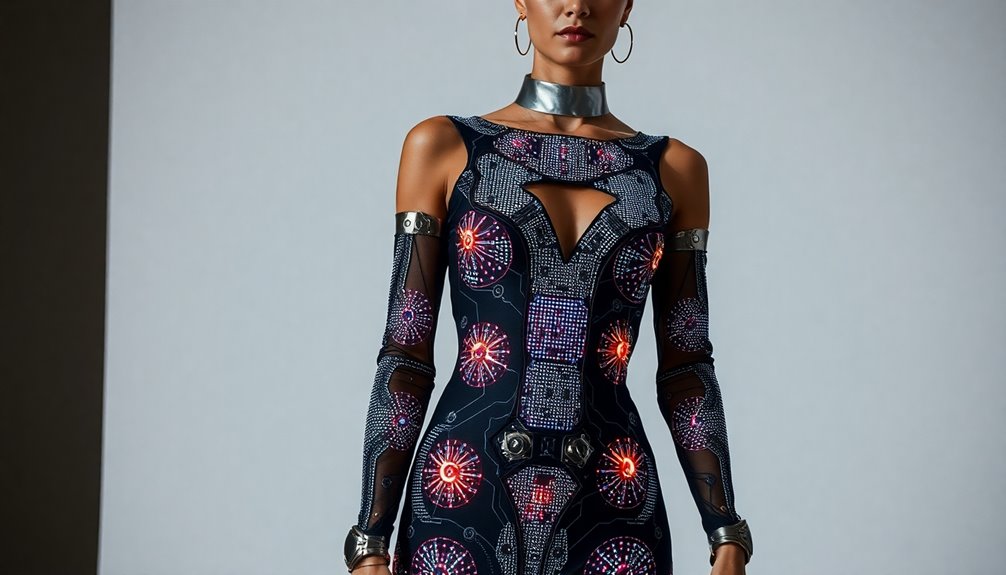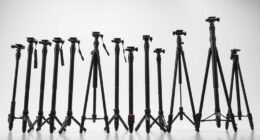Augmented reality shopping lets you visualize products in real time, making it easier to make confident purchase decisions. With virtual try-on features, you can see how clothes, accessories, or even furniture fit into your life before you buy. This technology reduces return rates by over 25%, increasing your shopping confidence and satisfaction. Popular retailers like Walmart and Amazon offer AR experiences that bridge online shopping with real-world interactions. As AR continues to evolve, you'll discover even more ways to enhance your shopping experience and engage with brands. You wouldn't want to miss what's next in this exciting trend!
Key Takeaways
- Augmented Reality (AR) allows customers to virtually try on clothing and accessories before making a purchase, enhancing shopping confidence.
- AR technology significantly reduces return rates by over 25% by providing accurate fitting experiences.
- Retailers like Warby Parker and IKEA utilize AR for immersive product visualization, improving customer interaction.
- AR shopping experiences lead to increased sales, with Shopify stores reporting up to a 94% boost in revenue.
- Future trends indicate personalized shopping through AI and real-time interactions with the advent of 5G technology.
Online Shopping Challenges

As you navigate the world of online shopping, you might find that it comes with its own set of challenges. With 63% of consumers exploring products digitally before buying, the likelihood of returns skyrockets.
In fact, online clothing purchases see return rates as high as 23%, often due to issues with sizing and fit. This not only frustrates your shopping experience but also contributes to the environmental impact, with 24 million metric tons of CO2 emissions linked to returns.
Many consumers resort to bracketing, buying multiple sizes in hopes of finding the right fit, which only exacerbates the issue. Embracing AR technologies could enhance customer experience by offering immersive shopping and product visualization, creating a true try-before-you-buy experience. Additionally, understanding energy efficiency can help consumers make informed decisions about their purchases, reducing waste and improving satisfaction.
AR/VR Technology in Retail
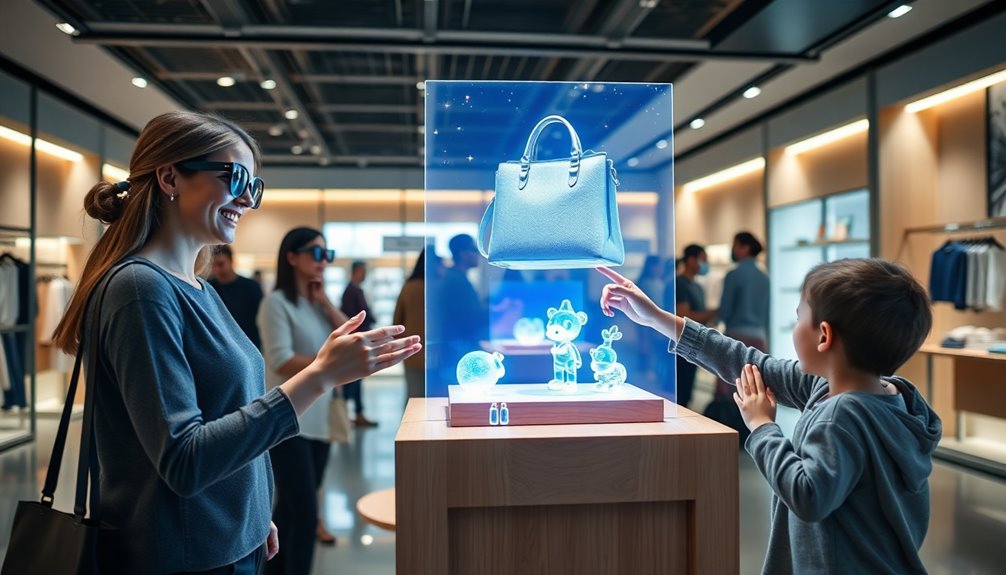
While online shopping offers convenience, integrating AR and VR technology transforms the retail experience by providing immersive ways to visualize products.
With virtual try-on features, you can interact with items like clothing and accessories in a realistic manner, greatly enhancing product visualization. This not only boosts your purchase confidence but also creates a more engaging customer experience.
Retail technology like AR reduces returns by over 25%, allowing you to accurately fit and visualize products before making a purchase.
As the AR/VR market in retail continues to grow, you'll find that immersive shopping becomes the new norm, making online shopping more interactive and satisfying, ultimately leading to higher conversion rates and happier customers.
Real-World Applications
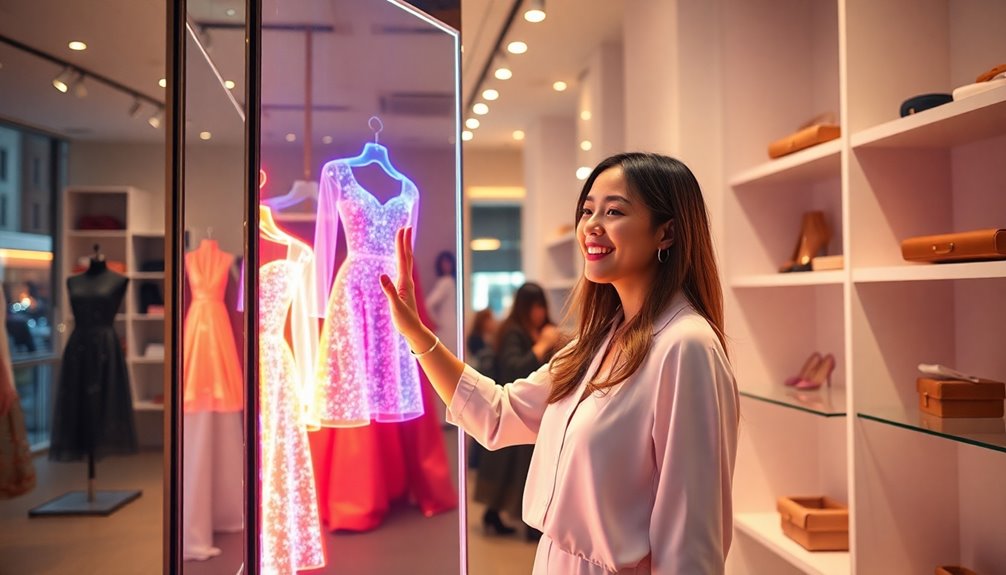
The integration of AR and VR technology in retail has led to innovative real-world applications that enhance your shopping experience.
With Walmart's AR-powered Beauty Virtual Try-On, you can experiment with hair colors and cosmetics, allowing customers to truly visualize products before making online purchases.
Amazon's virtual try-on feature lets you see how items from major brands like Adidas and Ray-Ban will look on you, bridging the gap between online shopping and the physical experience.
The IKEA Studio app helps you design 3D room layouts, ensuring furniture fits your space perfectly.
Warby Parker's AR technology offers virtual eyeglass try-ons, while Pure Cycles uses Shopify AR to let you explore bike components interactively.
These applications help reduce returns and encourage you to try before you buy. Furthermore, the trend of energy-efficient models in home heating solutions highlights the increasing importance of integrating technology into everyday purchases.
Benefits of AR Shopping
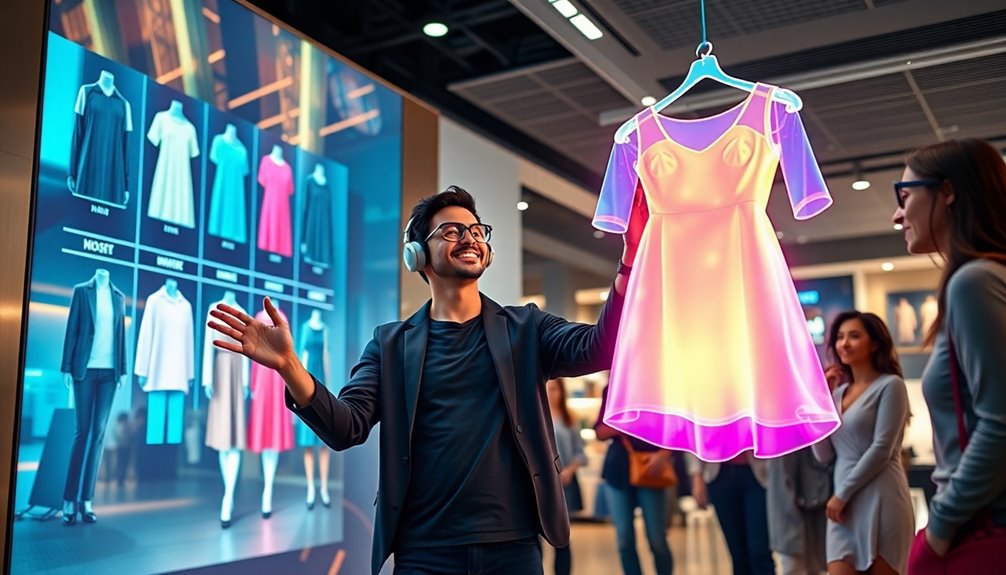
Augmented Reality (AR) shopping revolutionizes the way you experience retail, making it easier to visualize products before you buy. With AR, you can engage in virtual try-ons, boosting your confidence in purchasing decisions. This technology considerably reduces return rates—by over 25%—as you better understand what you're getting. Retailers benefit, too, with conversion rates soaring; Shopify stores featuring AR content report up to a 94% increase in sales. Plus, enhanced customer experiences foster brand loyalty, as satisfied shoppers share their AR interactions online. Furthermore, leveraging renewable energy technologies in retail operations can further enhance sustainability and appeal to environmentally conscious consumers.
| Benefit | Impact on Shopping | Example |
|---|---|---|
| Reduced Return Rates | Over 25% | Warby Parker |
| Increased Conversion | Up to 94% | Shopify AR Integration |
| Boosted Purchase Likelihood | Up to 200% | Nike's Virtual Try-Ons |
| Enhanced Brand Loyalty | Amplified Visibility | Social Media Sharing |
Future Trends in AR
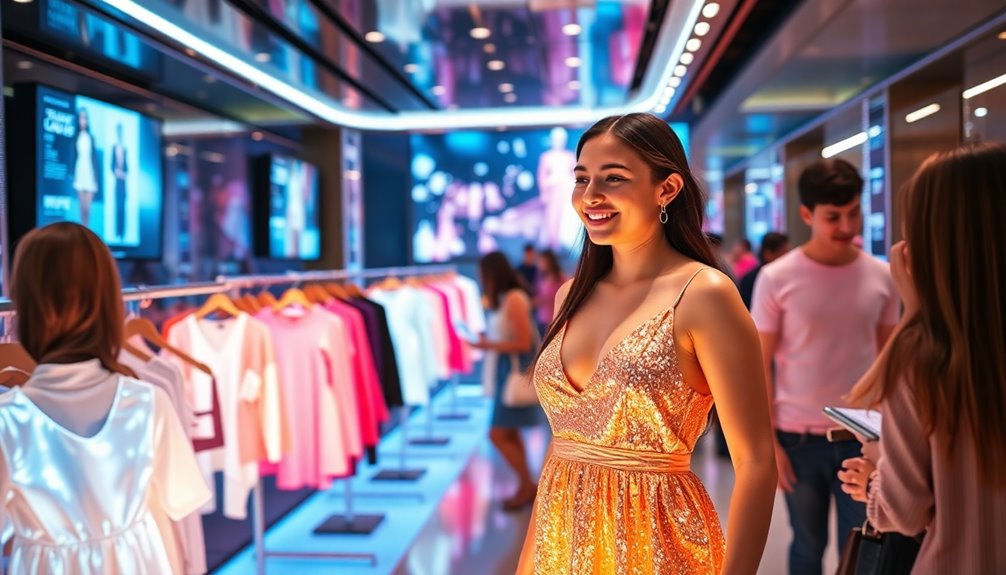
As AR shopping continues to reshape retail experiences, exciting trends are on the horizon.
The integration of AI algorithms will allow you to enjoy personalized experiences, tailoring recommendations to enhance user engagement based on your preferences.
With the rollout of 5G technology, expect real-time interactions and smoother navigation in online retail.
As AR solutions become more affordable, small and medium-sized businesses will leverage this tech, leveling the e-commerce playing field.
Additionally, the expansion of AR applications into sectors like real estate and automotive shows a broader adoption of immersive technologies.
Enhanced gamification and interactive shopping experiences will transform how you engage with brands, making purchasing decisions more enjoyable and dynamic in virtual environments.
Furthermore, the growing demand for renewable energy solutions is expected to drive innovative applications of AR in retail settings, enhancing customer experiences while promoting sustainability.
Frequently Asked Questions
How Does AR Shopping Enhance the Online Shopping Experience?
AR shopping enhances your online shopping experience by allowing you to visualize products in your own space before purchasing.
You can see how an item fits within your environment, which reduces uncertainty and increases confidence in your choices. Instead of relying solely on images, you interact with 3D models, making the process more engaging.
It saves time and minimizes returns, ensuring you get exactly what you want, tailored to your style and needs.
What Devices ARe Compatible With AR Shopping Applications?
When it comes to AR shopping applications, you're in luck! Most smartphones and tablets from major brands like Apple and Samsung support these apps.
If you've got a newer device, chances are it's ready to go. Additionally, AR glasses are on the rise, giving you a whole new way to experience shopping.
Is AR Shopping Suitable for All Types of Products?
AR shopping isn't suitable for all product types.
While it works great for items like furniture or clothing, enabling you to visualize them in your space or on yourself, it struggles with products needing detailed inspection or complex functionalities, like electronics.
You'll find that items requiring tactile feedback or intricate details, such as jewelry, may not translate well into an AR experience.
How Does AR Technology Impact Return Rates for Retailers?
AR technology considerably reduces return rates for retailers.
When you visualize products in your space before purchasing, you're less likely to make a mistake. It helps you assess fit, style, and compatibility, which leads to more informed decisions.
This means fewer returns for retailers and greater satisfaction for you. As a result, both you and the retailer benefit from a smoother shopping experience, ultimately boosting sales and customer loyalty.
ARe There Privacy Concerns With Using AR Shopping Apps?
Have you ever wondered if your personal data is safe when using certain apps?
With AR shopping apps, privacy concerns arise as they often require access to your camera and location. This data collection can lead to unauthorized sharing or misuse.
While these apps enhance your shopping experience, you should stay informed about how your information is used. Always check privacy policies and consider whether the benefits outweigh potential risks to your privacy.
Conclusion
As you embrace augmented reality shopping, think about how it transforms your experience. No longer do you have to worry about sizing or whether that couch will fit your living room. AR lets you visualize products in your space, making decisions easier and more satisfying. Imagine the excitement of finding the perfect item without the hassle of returns. With this technology, shopping becomes not just a task but an enjoyable journey of discovery and confidence in your choices.






